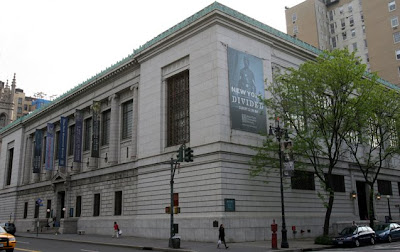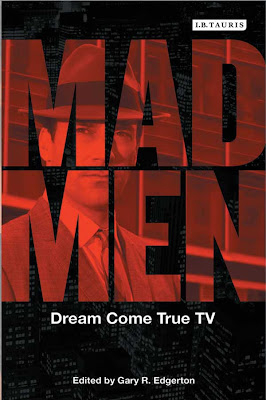 One month after the terrorist attacks of September 11, 2001, the New-York Historical Society committed its resources to a new initiative called, History Responds, with exhibitions, public events and educational initiatives. Since then, the Society has presented 17 special exhibitions relating to the attacks, 20 public programs, five community meetings, numerous school and teacher programs and, when the Society’s newly-renovated headquarters reopens on September 8, 2011, a permanent installation of photographs and other materials donated by survivors, witnesses, and rescuers.
One month after the terrorist attacks of September 11, 2001, the New-York Historical Society committed its resources to a new initiative called, History Responds, with exhibitions, public events and educational initiatives. Since then, the Society has presented 17 special exhibitions relating to the attacks, 20 public programs, five community meetings, numerous school and teacher programs and, when the Society’s newly-renovated headquarters reopens on September 8, 2011, a permanent installation of photographs and other materials donated by survivors, witnesses, and rescuers.
To commemorate the tenth anniversary of September 11, the New-York Historical Society will present a special exhibition, Remembering 9/11, which will be free to the public. The exhibition opens on September 7, 2011 and will remain on view through April 1, 2012. The exhibition presents a selection of several hundred photographs taken by professional and amateur photographers in the immediate aftermath of the attack on the World Trade Center (originally collected in the independent exhibition “here is new york: a democracy of photographs”), as well as letters written to policemen and firemen- objects that were placed in makeshift shrines around New York- images and texts from the New York Times “Portraits of Grief” series- photographs of the Tribute in Light- and drawings of the National September 11 Memorial, designed by architect Michael Arad with the assistance of landscape architect Peter Walker.
As a special presentation for families, the Historical Society will also host a free reading by Vin Panaro, Bugler for the Fire Department of New York, and Katie Fuller, Museum Educator, of Maira Kalman’s book Fireboat, to be held in the Rotunda from 11:30 a.m. to 12:30 p.m. on Sunday, September 11, 2011.
“In the months immediately following September 11, 2001, the New-York Historical Society began a vigorous collecting initiative and exhibition program regarding the terrorist attacks,” Kenneth T. Jackson stated. “This was our responsibility, as the institution founded to gather, preserve and interpret materials related to the history of New York City and State and the nation. “On the tenth anniversary of the attacks, it is important that the Historical Society is continuing this effort with Remembering 9/11.”
Louise Mirrer, President and CEO of the New-York Historical Society, stated, “It takes a great historian to recognize the importance of his or her own historical moment, and to collect and preserve its effects. My predecessor, Kenneth T. Jackson is that great historian. On September 11th Ken recognized the tragedy of the day keenly, but saw also the need to collect and preserve so that future generations would understand what September 11th meant, for our city, our nation, our history. It is because of Ken’s work that our tenth anniversary exhibition Remembering 9/11 is able to document New York’s, and the nation’s, resilience along with the selfless acts of heroism, not only at the World Trade Center but also at the Pentagon and Shanksville.”
Remembering 9/11 is organized for the New-York Historical Society by Marilyn Satin Kushner, Curator and Head, Department of Prints, Photographs and Architectural Collections. “I wanted to create a space where people could come to quietly remember those days in 2001 and honor the memories of the people who were lost in the attacks. The solemnity of this occasion calls for a mood of respect and introspection,” stated Dr. Kushner.
When the renovated and transformed New-York Historical Society opens fully to the public on November 11, 2011, Remembering 9/11 will be joined by a permanent installation of photographs from “here is new york” in the Robert H. and Clarice Smith New York Gallery of American History. Approximately 1,500 photographs by 790 contributors will be on display, along with a large fragment of a fire truck destroyed during the 9/11 attack.
Since the inception of the Historical Society’s History Responds, more than 150,000 visitors have taken part in its interpretive programs. Today, the History Responds collection includes numerous artifacts associated with September 11, ranging from architectural relics of the Twin Towers to artworks inspired by the catastrophe.
Remembering 9/11 is supported by Bernard and Irene Schwartz.
Photo: Alan Finkel, Untitled, 2001. New-York Historical Society, Courtesy of Alan Finkel.
 A new book by Irish journalist and commentator Dave Hannigan, De Valera in America: The Rebel President and the Making of Irish Independence, illuminates an interesting period in New York Irish history when de Valera, born in New York City in 1882, made an important return trip to convince Americans to recognize the newly proclaimed Irish Republic.
A new book by Irish journalist and commentator Dave Hannigan, De Valera in America: The Rebel President and the Making of Irish Independence, illuminates an interesting period in New York Irish history when de Valera, born in New York City in 1882, made an important return trip to convince Americans to recognize the newly proclaimed Irish Republic.







